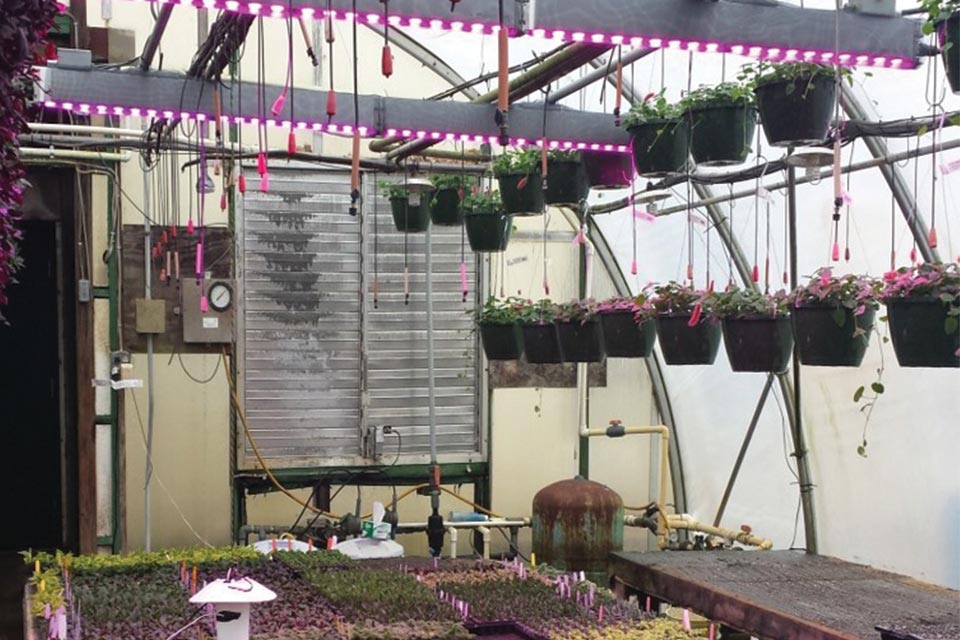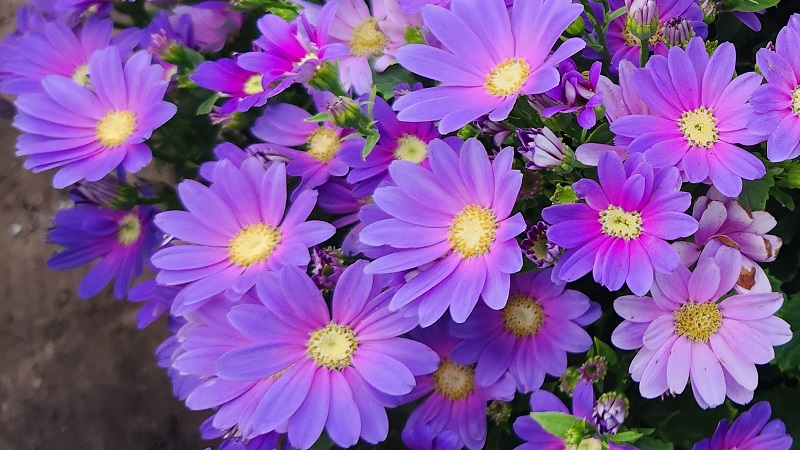How Supplemental Lighting Can Improve Crop Production
 The Plant Lighting Short Course enters its third week with a closer look at how supplemental lighting can improve crop production. Selecting the best lights for your production facility can be confusing. This module will cover the pros and cons of different light spectra for supplemental lighting, methods of long-day lighting to control flowering, achieving good light uniformity in your greenhouse, and considerations for indoor crop production with sole-source lighting. The program takes place on October 28; click here to sign up.
The Plant Lighting Short Course enters its third week with a closer look at how supplemental lighting can improve crop production. Selecting the best lights for your production facility can be confusing. This module will cover the pros and cons of different light spectra for supplemental lighting, methods of long-day lighting to control flowering, achieving good light uniformity in your greenhouse, and considerations for indoor crop production with sole-source lighting. The program takes place on October 28; click here to sign up.
Here’s an overview of what you can expect:
“Spectral considerations” During periods of low solar radiation, greenhouse growers can utilize high-intensity supplemental lighting to increase the daily light integral their crops receive to improve plant growth, yield, and quality. In this session from Michigan State University’s Roberto Lopez, you will learn how and when light quality (i.e., blue, green, red, and far-red light) from supplemental lighting fixtures can also influence morphology, foliage color, and flowering of crops. Additionally, Lopez will discuss how light intensity may trump the light spectrum depending on your greenhouse location.
“Lighting for indoor agriculture (considerations, benefits, opportunities)” Flowering of a large number of ornamental crops is regulated by photoperiod. Many of them flower when the days are long (the nights are short) and therefore, low-intensity lighting at night can accelerate flowering. There are different strategies and fixtures types to deliver long days, but efficacy depends on the lighting intensity, duration, and in some cases, spectrum. This session from Chief Science Offer David Hawley at Fluence by Osram will provide details on effective and efficient of low-intensity lighting to inhibit flowering of short-day plants and accelerate flowering of long-day plants.
“Photoperiod lighting” Once a lighting system is installed, it is often a good idea to assess the resulting light output: How much light is reaching the crop and how uniform is that light distributed over the growing area. For plant production systems in greenhouses where a lighting system is used to supplement solar radiation, it’s best to do an assessment at night so that the light characteristics of the lighting system can be evaluated independent of incident sunlight. For totally enclosed plant production systems, the (sole) electric lighting system can be assessed anytime. During this presentation, Michigan State’s Erik Runkle will discuss: 1) Instruments and calculation tools used to assess the light output of an installed lighting system, 2) Measurement protocols, and 3) Calculating key metrics that are used to evaluate the light output characteristics of a plant lighting systems. An example will be presented to demonstrate the steps involved and to discuss what can be learned from an assessment of the light output from a plant lighting system.
“Light uniformity assessment” In this session from A.J. Both at Rutgers University, impactful, rapid-fire overview of the “must-knows” of indoor horticultural lighting will be provided. Both will discuss how different lighting properties affect crop development; unpack the key economic considerations for indoor lighting; and provide recommendations for the data and insights growers should seek from their lighting providers. At the end of this session, attendees will be empowered to think critically about horticultural lighting, excited about the potential lighting technologies can unlock for their business, and eager to implement their newfound knowledge.
Learn more about Runkle’s presentation in the video below!










